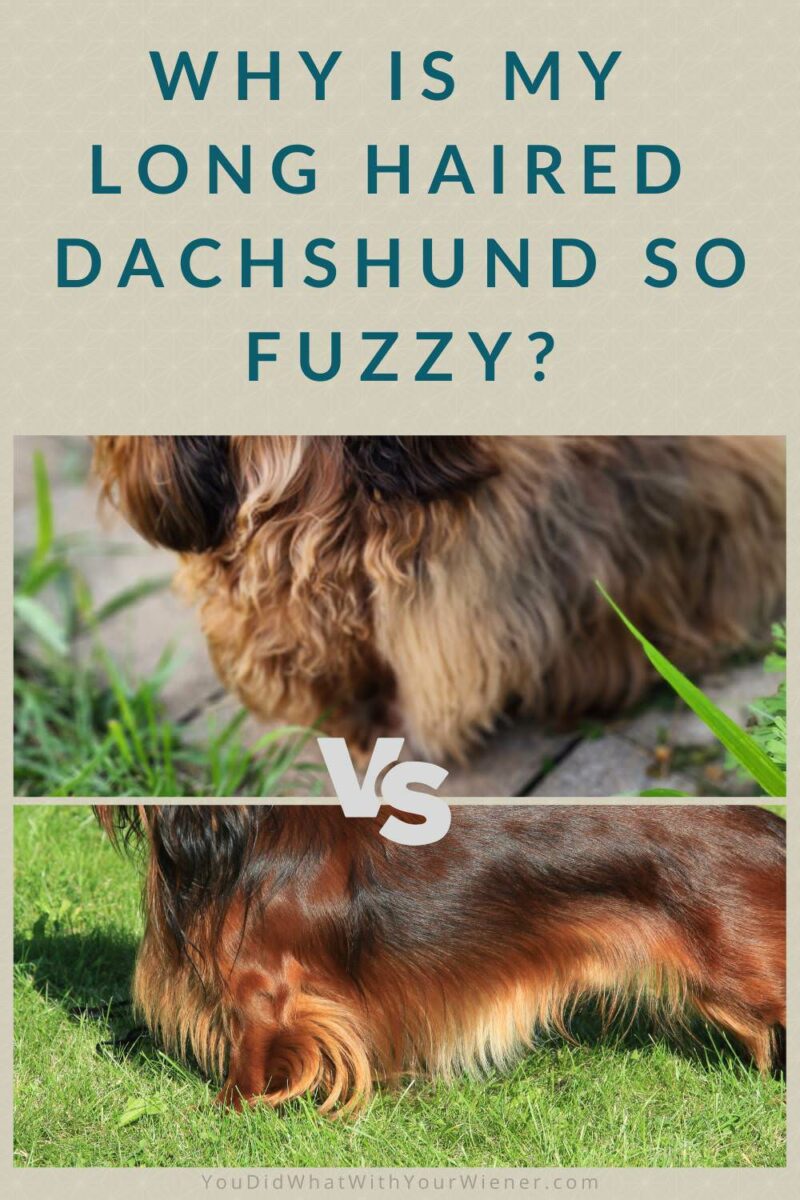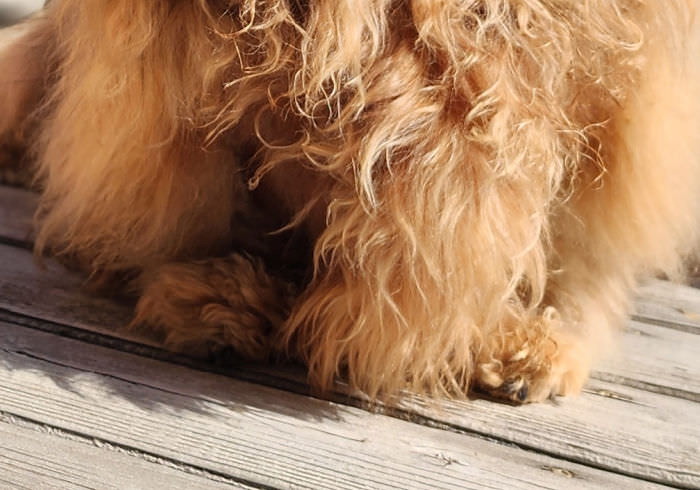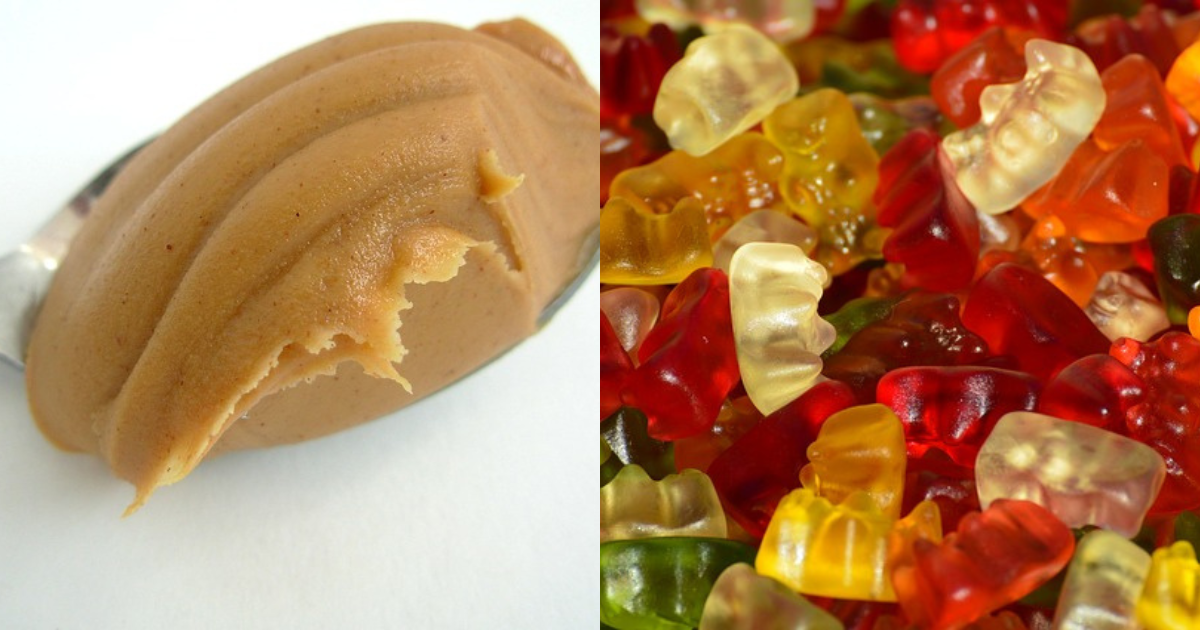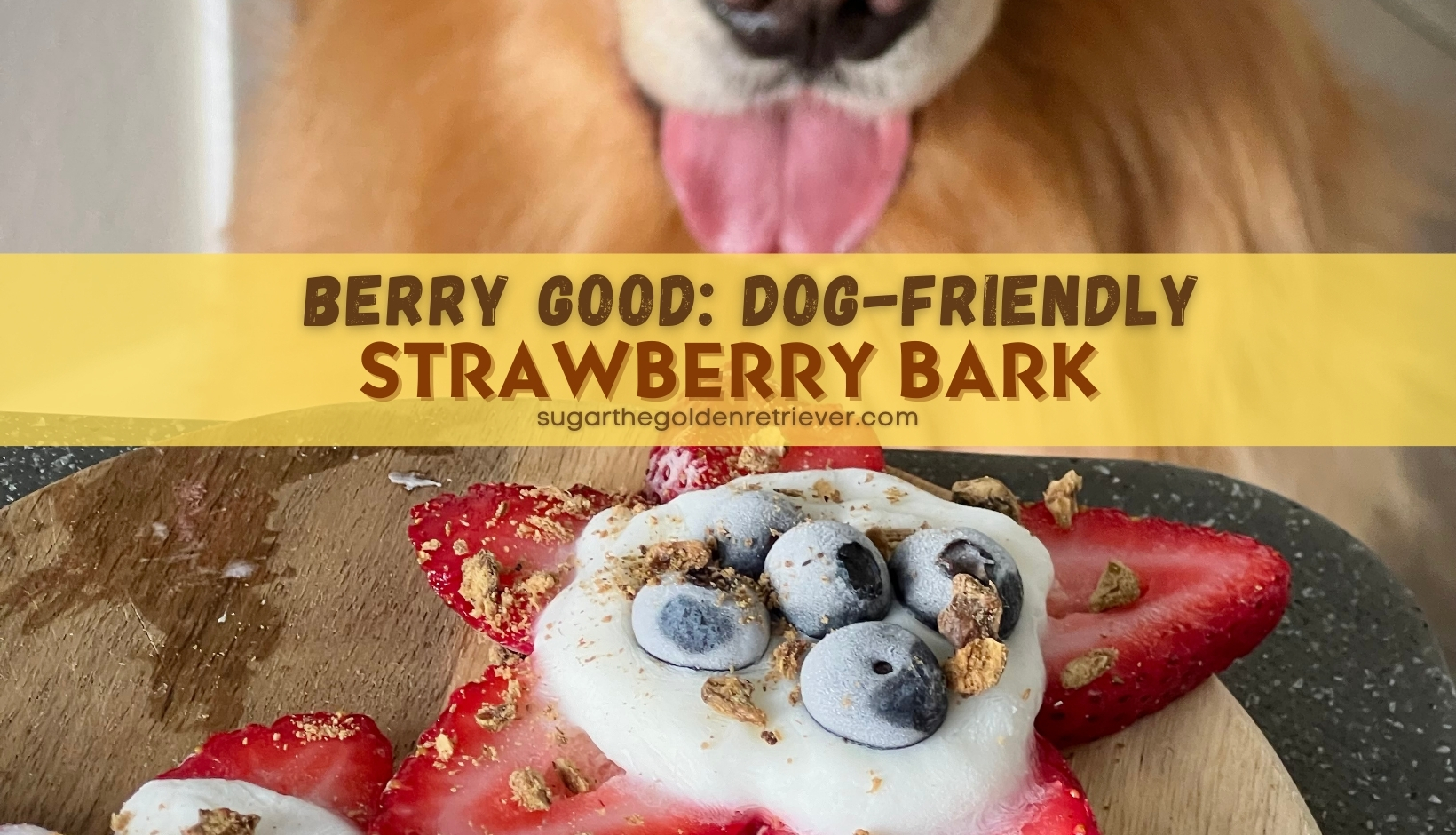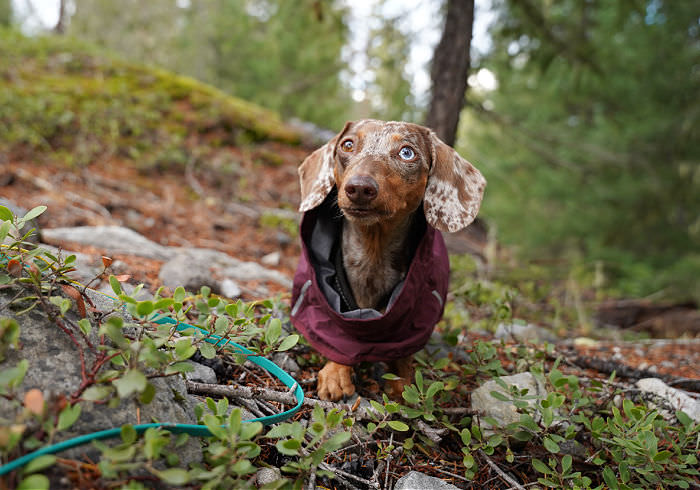About 10 years ago, I noticed that some long haired Dachshunds have hair that looks silky and flowy and some have hair that is downy and fuzzy.
I dog sat two female Dachshunds that were little poofballs.
A few years later, I learned that this fuzzy hair look was called a “spay coat” from my dog groomer friend.
What is a Spay Coat?
Spay coat on a Dachshund is when the very fine, fuzzy, dull undercoat extends out beyond the shiny, outer coat.
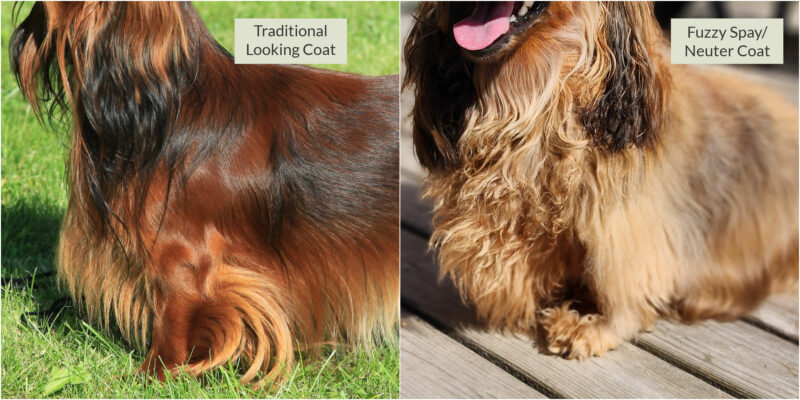
This can happen to other breeds too, like Golden Retrievers and Irish Setters, and is associated with the removal of sex hormones (in males, it is referred to as neuter coat).
It’s not a medical or technical term, but rather a slang term used by groomers, and increasingly by dog owners at they are becoming more knowledgeable about the condition.
There is little to no scientific documentation of this phenomenon, but it is clearly observed in some spayed or neutered Dachshunds.
The exact way this type of coat develops is unknown, but it’s likely related to the overgrowth of the undercoat, the production of fewer guard hairs (the longer, coarser, silkier hair), less shedding of the undercoat, less growth of the longer guard hairs, or a combination of these things (source).
I was finally able to locate one very small study that looked at coat changes after spaying.
It starts out by stating, “… spaying can result in qualitative hair coat changes in dogs”, observed that 3 out of 15 female dogs exhibited coat changes after having their hormones removed, but did not determine exactly what caused these coat changes.
Also, although not specifically for Dachshunds, if you search for “spay coat” or “dog coat changes after neutering” online you will discover dozens of forums where dog owners discuss this phenomenon.
Is Spay Coat a Problem?
Spay or neuter coat is not typically an issue. It’s not a significant problem in the medical sense.
However, some people buy a long-haired Dachshund based of the beautiful photos of Doxies with long, flowing, beautiful hair and then are disappointed when their’s ends up looking more like a swiffer.
The fuzzy nature of the spay coat also means that a Dachshund is likely to pick up more debris when outdoors, which can lead to more time and effort required for grooming.
One particular issue is foxtails, which are sharp grass seeds that tend to migrate in one direction once embedded and can lead to abscesses, wounds, and possibly surgery to remove them.
A Dachshund with a fuzzy, thick spay coat is more likely to pick up these grass seeds and it’s harder to notice them hitching a ride in your dog’s hair.
A spay coat is also generally thicker and denser than a non-hormonally-altered long haired coat, which can potentially lead to overheating in summer.
What Causes Spay Coat in Dachshunds?
As stated, the reason is due to the removal of hormones that somehow alters the normal way a long-haired Dachshund’s hair grows.
Spay coat is a slang term for the coat changes that occur in long haired dogs after their hormones are removed through spaying
It is important to note though that there are both minor and major medical reasons a long-haired Dachshund’s coat may change look or texture.
Two common Dachshund health issues that can cause coat changes are Cushing’s disease and thyroid imbalances.
Poor nutrition can also cause coat changes.
If you are concerned with the way your Dachshund’s coat is growing, please consult with your veterinarian, especially if it is a sudden change and your Dachshund has not recently been spayed or neutered.
Does Spay Coat Occur only in Long Hair Dachshunds?
I’m not sure if coat changes occur in short or wire haired Dachshunds.
If they do though, any changes are almost imperceptible.
Since neither wire or smooth Dachshunds have an undercoat the same way that a long haired Dachshund does, it can not become overgrown, surpass the growth of the longer guard hairs, or result in a fuzzy look.
It is true that the removal or hormones, which is, essentially, a forced menopause, can cause coat changes like dullness or alopecia (hair loss) but these changes are not referred to as spay or neuter coat.
Those terms are reserved exclusively for dog coats with the the fuzzy, downy, look.
How to Get Rid of Spay Coat
Whether you want to get rid of your Dachshund’s spay coat simply because you don’t like the look, or because it’s causing unwanted issues due to your environment or lifestyle, it is generally possible to maintain a normal-looking long haired Dachshund coat.
This can be done at home by hand-stripping, or plucking, the softer undercoat with your fingers.
The excess downy undercoat can also be removed using tools such as grooming rakes or knives (no, these are not the sharp kitchen type).
Although trimming can be used to do a final cleanup on the remaining few hairs if needed, cutting the dense, fuzzy, overgrown guard hairs is not recommended because it will mask the problem and can encourage growth of these hairs.
If you are uncomfortable stripping your Dachshund’s coat on your own, you can take your Dachshund to a groomer and have them do it.
They may hand strip the coat or do what is called a high velocity blowout.
If you ask, they may even teach you to do it at home on your own or as maintenance in between grooming appointments to make their job easier.
Is There Another Way a Dachshund Can Be Fluffy?
While spay coat is what causes a long haired Dachshund’s fur to turn downy and fuzzy, there is another way to get a fluffy Dachshund.
You may have seen a Dachshund that look more like a doodle or Maltese. Some might describe their coats as long and “silky”.
If the Dachshund is fluffy but the locks look more “flowing” than “fuzzy”, they are most likely a silky wire Dachshund, which is a combination of a long and wire coat.
So, while there is another way that a Dachshund can be fluffy, a spay coat looks distinctly different than that of a silky wire.
Final Thoughts
Spay coat in Dachshunds is a phenomenon where a silky long haired Dachshund’s coat changes and becomes fuzzy after being spayed or neutered.
While this phenomenon is not generally an issue, it can be under certain conditions and for certain lifestyles.
For example, if you hike and camp a lot with your Dachshund, this type of hair will likely pick up more debris, absorb more dirt and mud, and require more grooming.
Now that you know why a spay or neuter coat occurs, and that something can be done about it, you can work to restore your long-haired Dachshunds coat back to it’s traditional look and feel if desired.
Do be aware though that there are medical changes that can cause coat changes so visit your veterinarian if you are concerned, especially if your Dachshund was not recently spayed or neutered.
